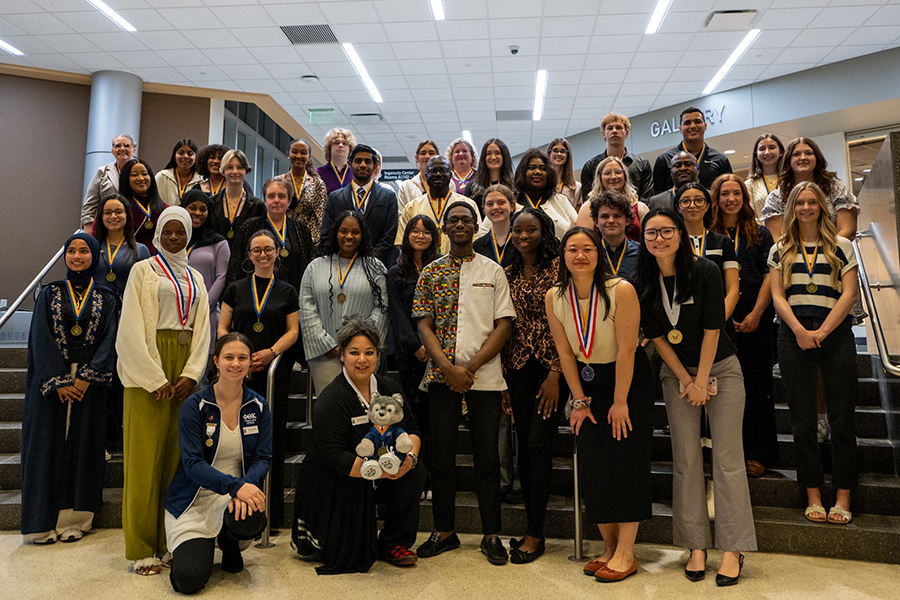Astronomy instructor Dixie Burns brought outer space to the classroom on Feb. 15. Students watched NASA’s live stream of asteroid 2012 DA14 as it flew past Earth at 1:25 p.m. CST.
The asteroid measured approximately 13 stories in size and it has never come this close to the Earth before. It was 17,200 miles from its closest approach point, Sumatra, Indonesia.
Burns put that into perspective with a helpful visual.
She said the distance could be compared to stacking three earths next to each other. As for its size, she said “the asteroid itself can fit nicely in a football field.”
Astronomers have been able to track the course of asteroids, especially large ones, with increasing sophistication in the past decade. Burns said that the most dangerous are those 10 km in size and larger.
“Those are the things that could cause global devastation. For example, a 10 kilometer asteroid wiped out dinosaurs,” she said.
While the 2012 DA14 asteroid did not hit Earth, a smaller sized meteor hit Chelyabinsk, Russia just a day before and left more than 500 people injured. An asteroid becomes a meteor when it enters Earth’s atmosphere. Scientists have confirmed that the two events are unrelated.
As for 2012 DA2014, Burns said that it is not only the proximity that makes it exciting. It’s what scientists can learn from it.
She said, “Just this whole idea that we are at a special time in human history where we can chart these things, where we’ll have the potential to possibly visit these things, you know, could we use them for resources in the future, if one’s on a collision course with the Earth, are we at a point in history where we might be able to do something about it?”
Student Ezra Coutre President of the Physics club attended the event. He said:
“It’s just an interesting thing to see how things are moving across the sky and being able to see how things are moving about in our astral neighborhood.”
Biomedical Engineering student Anna Zebzda added, “I was surprised it got so close.”
The 2012 DA14 asteroid will not come this near to Earth again until 2080.


























